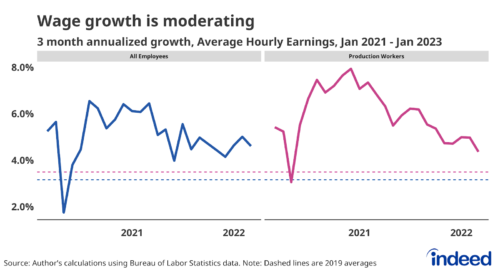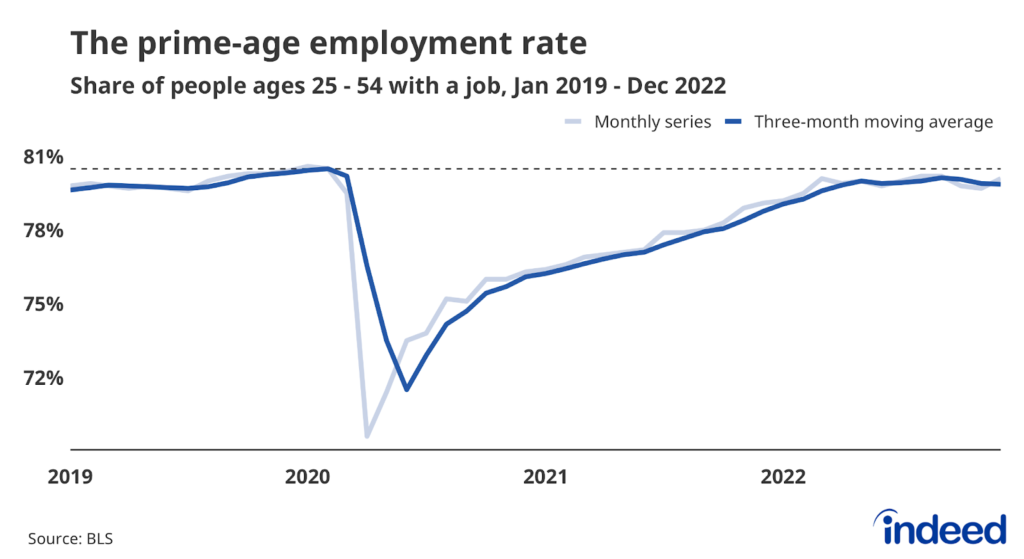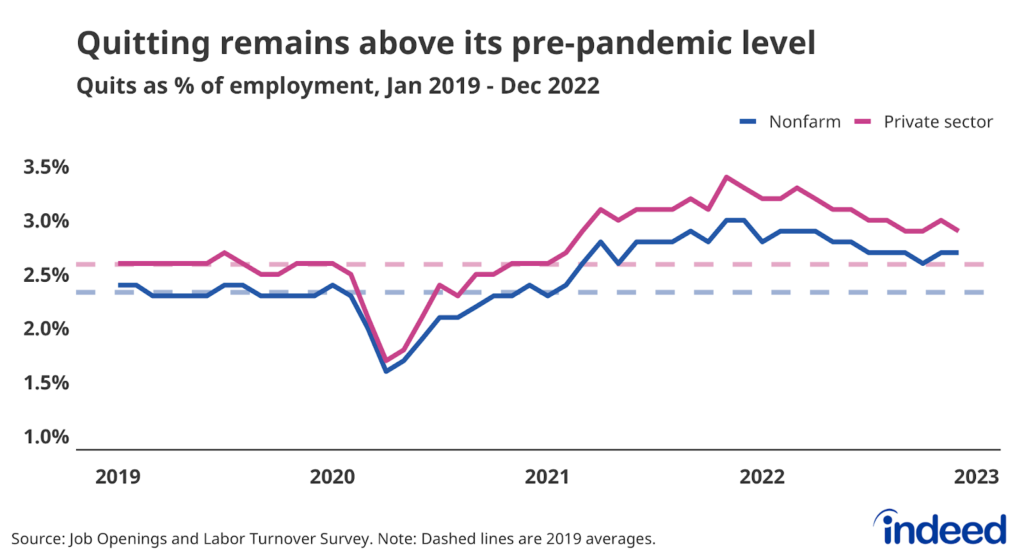Key Points:
- The US labor market had a strong start to the year with payrolls rising by 517,000 jobs and the unemployment rate dropping to 3.4%.
- Not only was the labor market strong in January but potentially leading indicators for the hiring outlook reversed course after trending down in recent months.
- Hiring may be powering ahead, but wage growth is moderating. The economic outlook depends in large part on how the Federal Reserve thinks swift hiring but slowing wages will impact inflation.
The US labor market keeps powering ahead. The eyepopping payroll growth number will get lots of attention, but stepping back and looking at trends over recent months still reveals a juggernaut of the labor market. Employers have added an average of 356,000 jobs a month over the past three months, and the unemployment rate dropped to a level not seen since before Neil Armstrong stepped on the moon. All this is happening as wage growth drifts down toward a pace that would have been celebrated before the pandemic. The burning question remains: how long can this strength endure?
Some data from recent jobs reports had raised concerns as potential leading indicators of the labor market were starting to blink yellow. Those signals flashed green in January as weekly hours rose and employment at temporary help service firms increased. While we don’t want to make too much of one report, the cessation of those troubling signs is heartening and suggests the strong jobs gains won’t fade too quickly.
Today’s report will also throw more kindling on the raging debate about how the Federal Reserve should think of the relationship between the labor market and inflation. If the central bank thinks that the low unemployment rate will necessarily push up wage growth and inflation moving forward, this strong report may darken the economic outlook. But if instead, Chair Powell and colleagues are heartened by tempering wage growth, then the odds that the economy can avoid a recession increase.
Many people have assumed the US economy will tip into a recession this year. But with each new batch of labor market data, those prospects seem to dwindle.



